How to Format Dialogue: Complete Guide
Dialogue formatting matters. Whether you’re working on an essay, novel, or any other form of creative writing. Perfectly formatted dialogue makes your work more readable and engaging for the audience.
In this article, you’ll learn the dialogue formatting rules. Also, we’ll share examples of dialogue in essays for you to see the details.

What is a Dialogue Format?
Dialogue format is a writing form authors use to present characters' communication. It's common for play scripts, literature works, and other forms of storytelling.
A good format helps the audience understand who is speaking and what they say. It makes the communication clear and enjoyable. In dialogue writing, we follow the basic grammar rules like punctuation and capitalization. They help us illustrate the speaker’s ideas.
General Rules to Follow When Formatting a Dialogue
Dialogue writing is an essential skill for both professionals and scholars . It shows your ability to express the issues and ideas of other people in different setups. The core rules of formatting are about punctuation. So, below is a quick reminder on punctuation marks’ names:
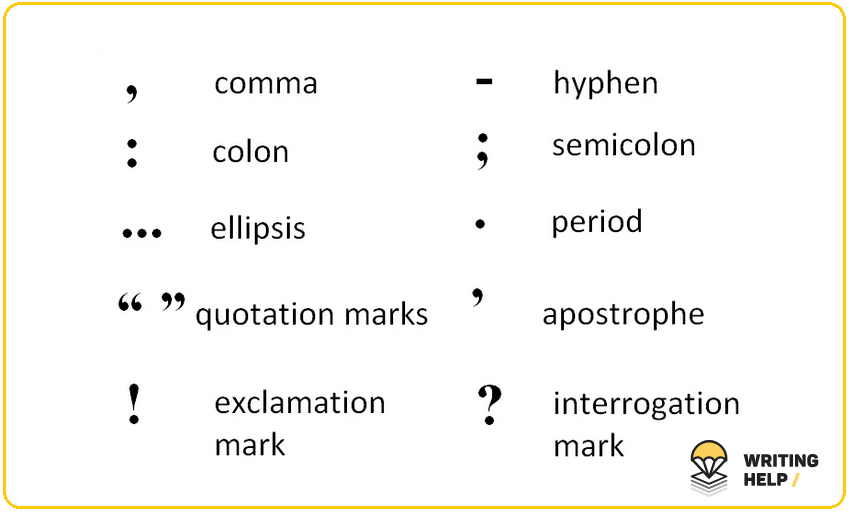
And now, to practice.
Please follow these rules for proper dialogue formatting:
- Use quotation marks. Enclose the speaker’s words in double quotations. It helps readers distinguish between a character’s speech and a narrator’s comments.
- Place punctuation inside quotation marks. All punctuation like commas, exclamations, or interrogation marks, go inside the double quotations.
- Keep dialogue tags behind quotation marks. A dialogue tag is (1) words framing direct speech to convey the context and emotions of a conversation. For example, in (“I can’t believe this is you,” she replied.), the dialogue tag is “she replied.”
- Use an ellipsis or em-dashes for pauses or interruptions. To show interruptions or pauses, end phrases with ellipses inside quotations. Em-dashes go outside quotations. No other extra marks are necessary here.
- Remember a character’s voice. Ensure that each character’s phrases reflect their background and personality.
5 More Rules to Know (+ Examples of Dialogue)
For proper formatting of dialogue in writing, stick to the following rules:
1. Each speaker’s saying comes in a new paragraph
Begin a new paragraph whenever a new character starts speaking. It allows you to differentiate speakers and make their conversation look more organized. (2)
“Has Mr. de Winter been in?” I said. “Yes, Madam,” said Robert; “he came in just after two, and had a quick lunch, and then went out again. He asked for you and Frith said he thought you must have gone down to see the ship.” “Did he say when he would be back again?” I asked. “No, Madam.” — from Rebecca by Daphne du Maurier
2. Separate dialogue tags with commas
When using dialogue tags ( e.g., “she said,” “he replied,”), separate them with commas.
For example:
“You’ve got to do something right now , ” Aaron said , “Mom is really hurting. She says you have to drive her to the hospital.” “Actually, Dad , ” said Caleb, sidling in with his catalog , “There’s someplace you can drive me, too.” “No, Caleb.” — from The Corrections by Jonathan Franzen
3. When quoting within dialogue, place single quotes
If a character cites somebody or something while speaking, we call it a reported dialogue. In this case, use single quotations within double ones you place for a direct speech. It will help readers see that it’s a quote.
John started to cry. “When you said, ‘I never wanted to meet you again in my life!’ It hurts my feelings.”
4. You can divide a character’s long speech into paragraphs
Dialogue writing is different when a person speaks for a longer time. It’s fine to divide it into shorter paragraphs. Ensure the proper quotation marks placing:
The first quotation mark goes at the beginning of the dialogue. Each later paragraph also starts with it until that direct speech ends.
The second quotation mark — the one “closing” the monologue — goes at the dialogue’s end.
Josphat took a deep breath and began. “ Here’s the things about lions. They’re dangerous creatures. They only know how to kill. Have you ever seen a lion in an open area? Probably not. Because if you had you’d be dead now. “ I saw a lion once. I was fetching firewood to cook lunch. All of a sudden I found myself face to face with a lion. My heart stopped. I knew it was my end on earth. If it wasn’t the poachers we wouldn’t be having this talk. ”
Yet, you can keep a long text as a whole by adding some context with dialogue tags. Like here:
As you can see, there’s no quotation mark at the end of the paragraph in red. It’s because the next “Ha! ha!” paragraph continues the character’s speech.
5. Use action beats
Describe actions to provide context and keep readers engaged. Help them “hear” your characters. Punctuation also helps here: exclamation (!) or interrogation with exclamations (?!) demonstrate the corresponding tone of your narrative.
He slammed the door and shouted , “I can’t believe you did that ! “
Mistakes to Avoid When Formatting Dialogue
A good dialogue is a powerful instrument for a writer to show the character’s nature to the audience. Below are the mistakes to avoid in formatting if you want to reach that goal.
So, please don’t :
- Allow characters to speak for too long. Writing long paragraphs will bore the reader, making them skip through your speech. Short but sweet talk is the best. When writing, aim to be brief, dynamic, and purposeful. If your character speaks too much, generating opinion essays , ensure this speech makes sense and serves a bigger purpose.
- Overburden dialogue with exposition. Avoid telling the story background or building sophisticated words in your characters’ speeches. Instead, reveal the narrative content in small bursts and blend it around the rest of the prose. Convey it through your character’s actions and thoughts rather than summaries and explanations.
- Create rhetorical flourishes. Make your characters sound natural. Let them speak the way they’d do if they were real people. Consider their age, profession, and cultural background — and choose lexical items that fit them most.
- Use repetitive dialogue tags. Constant “he asked” and “she said” sounds monotonous. Diversify your tags: use power verbs, synonyms, and dialogue beats.
Frequently Asked Questions by Students
How to format dialogue in an essay.
Formatting a dialogue in an essay is tricky for most students. Here’s how to do it: Enclose the speaker’s words with double quotations and start every other character’s line from a new paragraph. Stick to the citation styles like APA or MLA to ensure credibility.
How to format dialogue in a novel?
A dialogue in a novel follows all the standard rules for clarity and readability. Ensure to use attributions, quotation marks, and paragraph format. It makes your dialogue flow, grabbing the reader’s attention.
How to format dialogue in a book?
Dialogue formatting in a book is critical for storytelling. It helps the audience distinguish the hero’s words. Follow the general rules we’ve discussed above:
Use double quotations and isolate dialogue tags with commas. Remember to place the discussion in blocks for better readability.
How to format dialogue between two characters?
A two-character dialogue offers the best way to prove successful formatting skills. Ensure you use action beats, quotations, and attribution tags. It allows readers to follow the conversation and understand it better.
What is the purpose of dialogue in a narrative essay?
Dialogue writing is the exchange of views between two or more people to reach a consensus. It reveals the character’s attitude and argumentation. Last but not least, it helps convey the descriptive nature of your narrative essay.
References:
- https://valenciacollege.edu/students/learning-support/winter-park/communications/documents/WritingDialogueCSSCTipSheet_Revised_.pdf
- https://www.ursinus.edu/live/files/1158-formatting-dialogue
- Essay samples
- Essay writing
- Writing tips
Recent Posts
- Writing the “Why Should Abortion Be Made Legal” Essay: Sample and Tips
- 3 Examples of Enduring Issue Essays to Write Yours Like a Pro
- Writing Essay on Friendship: 3 Samples to Get Inspired
- How to Structure a Leadership Essay (Samples to Consider)
- What Is Nursing Essay, and How to Write It Like a Pro
How to Write Dialogue in an Essay: Perfect Writing Guide
Writing essays is a part of every student’s life. The tool that can be useful for all composition genres with no limitations is dialogue. Typically, article writing at school and college is related to informative or argumentative intentions.
Dialogues can be included in reflective or narrative texts and creative assignments, such as screenplays. Likewise, if your paper is more on the argumentative side, you may include a dialogue when transcribing an extract from an interview to reinforce your thesis.
To get the highest mark for your paper, it is crucial to know how to write a dialogue in an essay. Keep reading this article to find out how to add it to your paper, whether for academic, informative, or creative purposes.
Usage of Dialogues in Essays
Over our educational years at school and university, we are taught to compose argumentative, narrative, informative, creative, and expository essays. Writing becomes a skill we need to develop to be successful when composing a report.
Quote, text line, or dialogue represents two or more characters talking, and can turn a dull paper into an easy-going and fun learning experience.
And just like when watching a movie, dialogues will have us more engaged in discovering the ending of the tale. Moreover, you will have a strong thesis for persuasive essay texts by including dialogues in them. How is this accomplished?
Dialogue serves more than just fiction, as we stated earlier. They transform information into a fluid and rhythmic piece of writing, providing data on an actual scenario portrayed as a conversation. This results in a direct and captivating piece that will teach and entertain the reader. That sounds like a win-win situation, right?
How to Format Dialogue in an Essay?
Here you will encounter some of the essential rules in terms of punctuation and formatting that should be followed when writing effective dialogue in your article so that it is read naturally. If you are unsure of your profile essay writing skills, keep reading this page to get accurate and precise information for composing your best paper.
- How to add dialogue in an essay: you can either use double quotation marks to indicate what someone said, or start in a new line using a Dash followed by the actually spoken phrase every time a new character speaks. This demonstrates that dialogue conversations have started.
“Elisa gave me this purse for my birthday.”
—Elisa gave me this purse for my birthday.
—It looks good on you.
—Thank you, I like it a lot.
- If you are quoting already, use single quotation marks to add another quotation within. This is useful when you depict someone describing a certain circumstance that happened to them.
“He was eating lunch next to me when Tom came by and yelled, ‘let’s go outside,’ so we went.”
- Make sure to use closing quotation marks when the character finishes talking. If dashes are used instead, end that person’s speech with a complete stop, showing that a dialogue has ended.
“I took my cat to the Vet last night to get a shot. He is alright now.”
- When a character is quoted, exclamation and question marks should be placed inside the quotation marks. If the exclamation or quotation marks refer to the greater sentence, not the quotation itself, place them outside the quotation marks.
My niece screamed, “let’s play hide and seek!”. What was your reaction when your niece screamed, “let’s play hide and seek”?.
- Do not add a period if the character pauses in the speech; in this case, write the speech, then use a comma to include a remark and add another comma before the last part of said speech.
“I couldn’t finish the presentation tonight,” he said with a tired voice, “I will tomorrow.”
- If a quote is too long, for example, longer than a paragraph in the essay, you can break it into two sections to make it easier to read. Such a situation is frequent when you write a narrative text. This type of assignment is often given to college and high school students. And it’s one of the most difficult tasks. If you need more confidence in your composition writing skills but still want to get a great mark and impress your teacher, we recommend you to buy narrative essays from professional writers. They will definitely know how to deal with complicated quotes. Here you can see an example of how a big direct quote was shortened to create a new paragraph for the text:
“Christmastime at work is very intense, and we work long shifts. Last year, we launched fifteen new products so that they were sold out during Christmastime. Luckily, it was a success. Our most popular items were: a Christmas cookie-scented candle, a new edition of the traditional elf-pet costume, and a unique knife that cuts the turkey easily and evenly.
I tried the candle immediately and loved the scent; my sister dressed her dog and three cats as elves, poor things, but she looked amused, and my mom tried the turkey knife; she genuinely said it was the best she could use to cut the turkey.”
How to Write Dialogue in an Essay?

Knowing how to put dialogue in your essay will allow you to bring out your creative side while mastering the skill of showing rather than telling. If you want to know particular features of writing a good process essay , read to master how to write a dialogue and search for relevant sentences. Also, you’ll need to craft coherent paragraphs, use speech tags and be aware of the format and punctuation rules when writing dialogue in your paper.
Common Dialogue Mistakes to Avoid
Mistakes are easy to make when we need to learn the rules of correct essay writing, so pay attention to the most common mistakes to avoid delivering an enjoyable and compelling text.
One of the most frequent mistakes students make when they need to learn how to put dialogue in an essay is confusing dialogue with citations. The latter is adequate when directly referencing, word-by-word, other authors to support statements previously made regarding a particular topic. At the same time, dialogues are supposed to deliver information by being creative and motivating the reader to relate to a life situation described in the dialogue.
Citation: also known as direct quotes, is information written by an author and referenced to support a claim.
Dialogue: a speech between two or more characters, often portrayed to captivate the reader, and what is used is only a part of a greater conversation.
Other mistakes to avoid in your text:
- Providing too many details and unnecessary talk can be counterproductive. Keep it simple.
- Repeating information from one word to another. Describe it in your own words or show it through dialogue formatting. This will make the topic more interesting as the teacher will use their imagination. If you need help with how to do it properly, we recommend asking for help from a specialized platform, such as Edusson.com . Here you will find professional writers who will write your article quickly, plagiarism-free papers with high quality, and at a reasonable price.
- Using more dialogue tags than required can distort the readability of the conversation.
- Mentioning the characters’ names often, which only happens in real talk, decreases credibility.
- Incorrect use of opening quotation marks.
Some types of articles would benefit from dialogues to bring more dynamics into them. Check to avoid the mistakes we presented to you, compose creatively, and most importantly, just as dialogue tells a story. It describes a scenery that will make the reader learn through real-life association, so use dialogue when you think it will add value to the text.
Example of Dialogue in an Essay
Here we will give you examples of how to add dialogue to an essay:
Do thorough research on the topic by looking up reliable sources Use an online plagiarism checker to ensure that your paper is unique Explain the purpose of your study, providing supporting arguments, examples, and close by validating the thesis mentioned at the beginning. If the topic you are writing about is rather technical, define the meaning of its relevant vocabulary Teach the reader, do not assume they know everything. Otherwise, they wouldn’t come to read Verify that your composition is cohesive and informative Finally, read both your text and dialogue out loud to check they are coherent and eloquent.
Knowing these dialogue rules, you are ready to write with confidence! Whether you are writing for college, creating a dialogue for fun, or just eager to learn about this topic, you already know the essentials of how to write a dialogue in your essay with the correct format and punctuation rules. Additionally, if you are ever in need of professional help for your writing, you can always opt to pay to write an essay to ensure that you are submitting a well-written, high-quality paper.
Related posts:
- 6 Step Process for Essay Writing
- How to Write a Diagnostic Essay (Without Fail)
- How to Write a Rhetorical Analysis Essay
- Footnotes 101: A Guide to Proper Formatting
Improve your writing with our guides

How to Write a Scholarship Essay

Definition Essay: The Complete Guide with Essay Topics and Examples

Critical Essay: The Complete Guide. Essay Topics, Examples and Outlines
Get 15% off your first order with edusson.
Connect with a professional writer within minutes by placing your first order. No matter the subject, difficulty, academic level or document type, our writers have the skills to complete it.
100% privacy. No spam ever.


- AI Essay Writer
- Paraphraser
- AI Text Summarizer
- AI Research Tool
- AI PDF Summarizer
- Outline Generator
- Essay Grader
- Essay Checker
Dialogue is a conversation between two or more characters. It’s a way to convey thoughts, feelings, and actions through spoken words, making the narrative more dynamic and realistic. In essays, dialogue can be used to provide evidence, illustrate a point, or bring a story to life.
Types of Dialogue
- Example: “I can’t believe we won the game!” she exclaimed.
- Example: She said that she couldn’t believe they had won the game.
Direct dialogue is more vivid and engaging, while indirect dialogue is useful for summarizing conversations without going into detail.
There are also two other types of dialogues: inner and outer. The first one is when the characters are basically talking with themselves, while the second – is when they are talking to the audience or other persona. The type of dialogue to include mostly depends on the purpose with which you decided to write such a conversation into your essay in the first place.
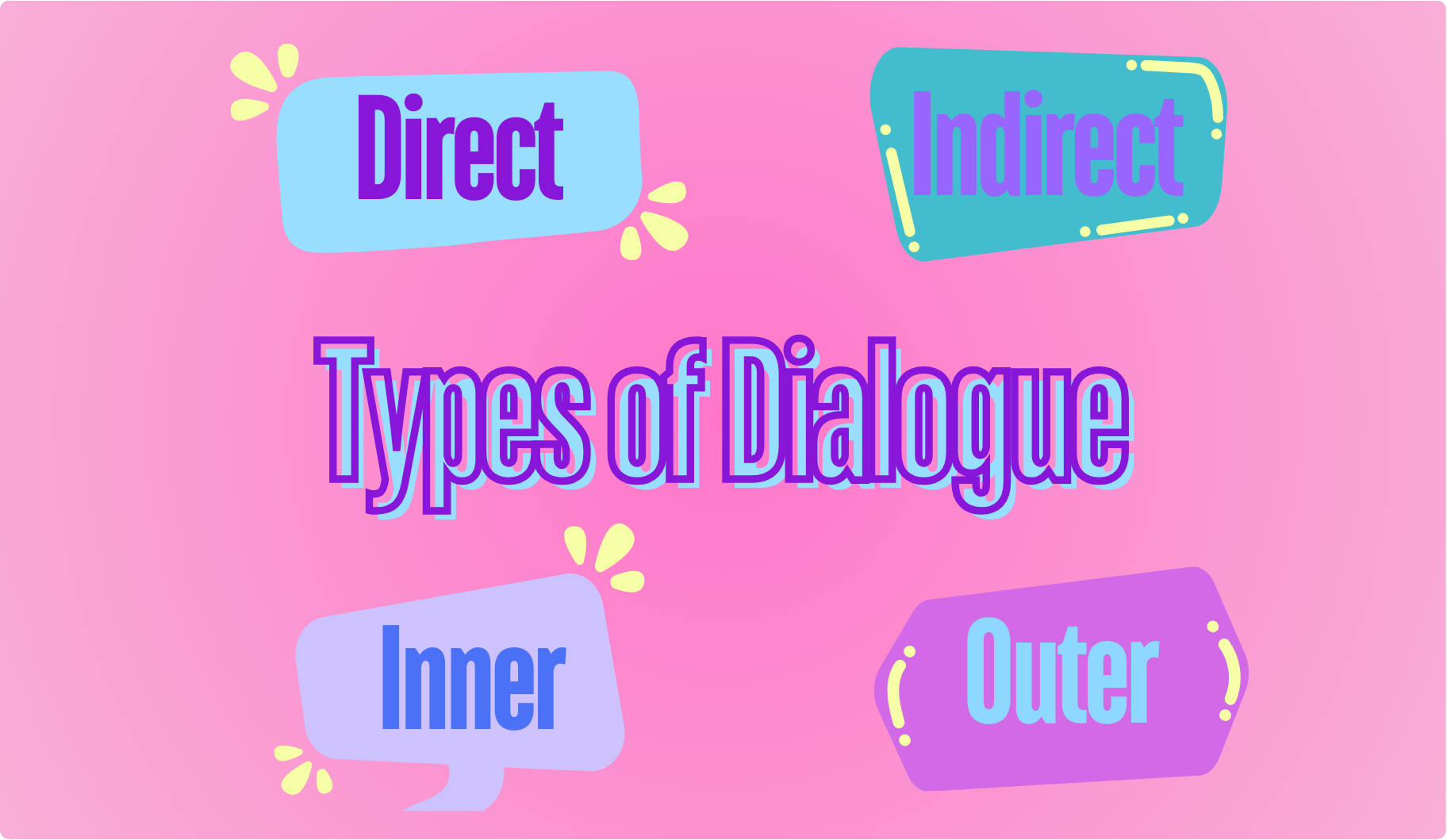
How to Format Dialogue in an Essay: General Rules
Writing a dialogue is not so tricky when you get accustomed to it. It is also much easier when you follow all the main rules.
Always enclose spoken words in quotation marks. Each speaker gets their own paragraph, even if they’re only saying one word. For example, “Where are we going?” she asked. “To the park,” he replied .
Indent these paragraphs, unless it’s the start of a chapter or after a scene break.
When it comes to formatting dialogue, punctuation is key. Commas and periods should be placed inside the quotation marks. For example: “Let’s go,” she said.
Question marks and exclamation points can go inside or outside the quotation marks depending on the sentence. For instance, if the punctuation is part of the dialogue, it goes inside: “Are you coming?” he asked.
If it’s part of the overall sentence, it goes outside: Did he really say, “I’ll be there”?
Use single quotation marks for a quote within a quote. For example: “I heard him say, ‘I’ll be there soon,’” she recounted.
Additionally, when you have multiple characters speaking, it’s important to make sure each voice is distinct and recognizable. This can be achieved through word choice, sentence structure, and even punctuation. For instance, a character who is nervous might speak in short, choppy sentences, while a more confident character might use longer, flowing sentences.
Lastly, be mindful of the pacing of your dialogue. Rapid exchanges can create a sense of urgency or tension, while longer, more reflective dialogue can slow the pace and allow for deeper exploration of themes or character development. And make sure the dialogue adds value to your essay by supporting your argument or adding depth to your story.
How to Put Dialogue in an Essay: Step-by-Step Process
Now, as we got the basics out of the way, we can move on to writing. To make the process less chaotic and simpler to manage, you can follow the steps below.
- Identify the Purpose Determine why you are including dialogue. Is it to support a point, provide evidence, or add a narrative element? Example: To show a character’s change in attitude, you might include a conversation where they express their new viewpoint.
- Set the Scene Give context to the dialogue. Who is speaking? Where are they? What is happening around them? Example: As the rain poured outside, Jane turned to Mark and said, “We need to talk about what happened.”
- “I’ve been thinking,” Jane began, “about what you said yesterday.”
- Mark looked away, his expression unreadable. “And?”
- Add Dialogue Tags Use tags like “he said” or “she asked” to clarify who is speaking. Example: “I’m not sure if it’s the right decision,” she admitted.
- Review and Edit Make sure the dialogue is clear, concise, and relevant to your essay.
Tips and Tricks for Writing an Effective Dialogue
Writing dialogue that feels authentic and engaging requires a mix of creativity and attention to detail. One of the most important aspects is to make characters sound like real people, which means breaking grammatical rules occasionally. People don’t always speak in complete sentences or use proper grammar, so letting your characters do the same can make them more relatable. For instance, breaking sentences with periods can emphasize emotions, like in: “I. Want. That. PUPPY!!!” Morgan exclaimed.
This technique forces the reader to pause at each word, conveying the character’s excitement.
However, readability is still important. If the dialogue is too jumbled, it will confuse readers. Even when characters use poor grammar, proper punctuation helps make their speech clearer. Take this example: “Because no,” she said into the phone. “I need a bigger shed to store all my stuff in . . . yeah, no, that’s not gonna work for me, I told you what I need and now you gotta make it happen.”
*Pro tip here: read your dialogue aloud to see if it flows naturally like a normal conversation or if it sounds robotic/too literary.
When editing dialogue, cut out the small talk and filler words that don’t add to the story. Dialogue should characterize individuals, define relationships, and advance the plot. For instance, characters in TV shows rarely say “good-bye” when hanging up because it doesn’t contribute to the storyline. Additionally, varying dialogue tags can help convey the tone but don’t overdo it. Basic tags like “said” often work best, but occasionally using tags like “shouted” or “whispered” can add nuance. Unconventional tags like “laughed”, though, should be used sparingly to avoid distracting the reader.
Each character should have a unique voice, which can be achieved through distinct vocabulary, speech patterns, and reactions. Consistency is key, and any changes in a character’s voice should be intentional and fit the narrative. Reading dialogue out loud can help identify any unnatural phrasing or inconsistencies.
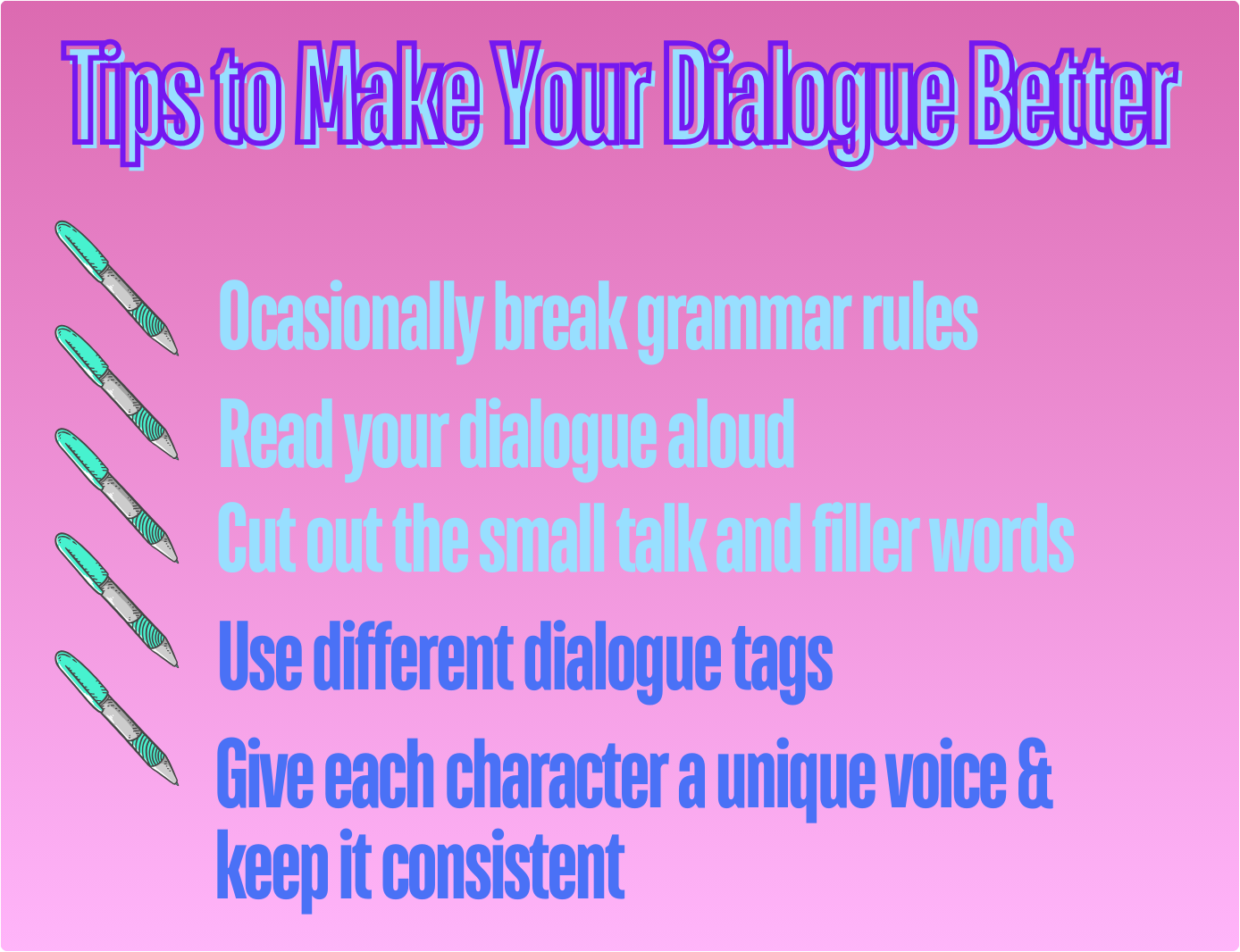
Writing dialogue in an essay might seem tricky at first, but with these tips and rules, you’ll be able to add engaging and effective conversations to your writing. Remember to keep it relevant, follow the formatting rules, and use dialogue to improve your narrative (and not just to add the word count). Practice makes perfect, so don’t be afraid to experiment and see what works best for your style.
How to write dialogue in an essay example?
To write dialogue in an essay, you should start by identifying the purpose of the dialogue. Once you have the purpose, set the scene by providing context about who is speaking, where they are, and what is happening around them. Write the dialogue using quotation marks to enclose the spoken words and start a new paragraph each time a different character speaks. For example: “I’ve been thinking,” Jane began, “about what you said yesterday.” Mark looked away, his expression unreadable. “And? ”
What are the 5 rules of writing dialogue?
When writing dialogue, the key rules to remember include:
- putting spoken words in quotation marks,
- starting a new paragraph for each new speaker,
- placing punctuation inside the quotation marks,
- making sure the dialogue adds value to your essay,
- and making each character’s voice distinct and recognizable through word choice and sentence structure.
How do you write a dialogue?
Begin by determining the purpose of the dialogue in your essay. Set the scene to provide context for the conversation, then write the dialogue itself using quotation marks. Each new speaker should start a new paragraph. Use dialogue tags sparingly to avoid confusion about who is speaking, and incorporate action beats to add context and depth. Finally, review and edit the dialogue to ensure clarity and relevance.
What is an example of a dialogue?
An example of a dialogue could be a conversation between two characters discussing their plans. For instance: “Are you coming to the party tonight?” Sarah asked, her eyes lighting up with excitement. “I’m not sure,” John replied, glancing at his watch. “I have a lot of homework to finish.”
This exchange illustrates how dialogue can be used to convey information and reveal character traits.
Related Posts
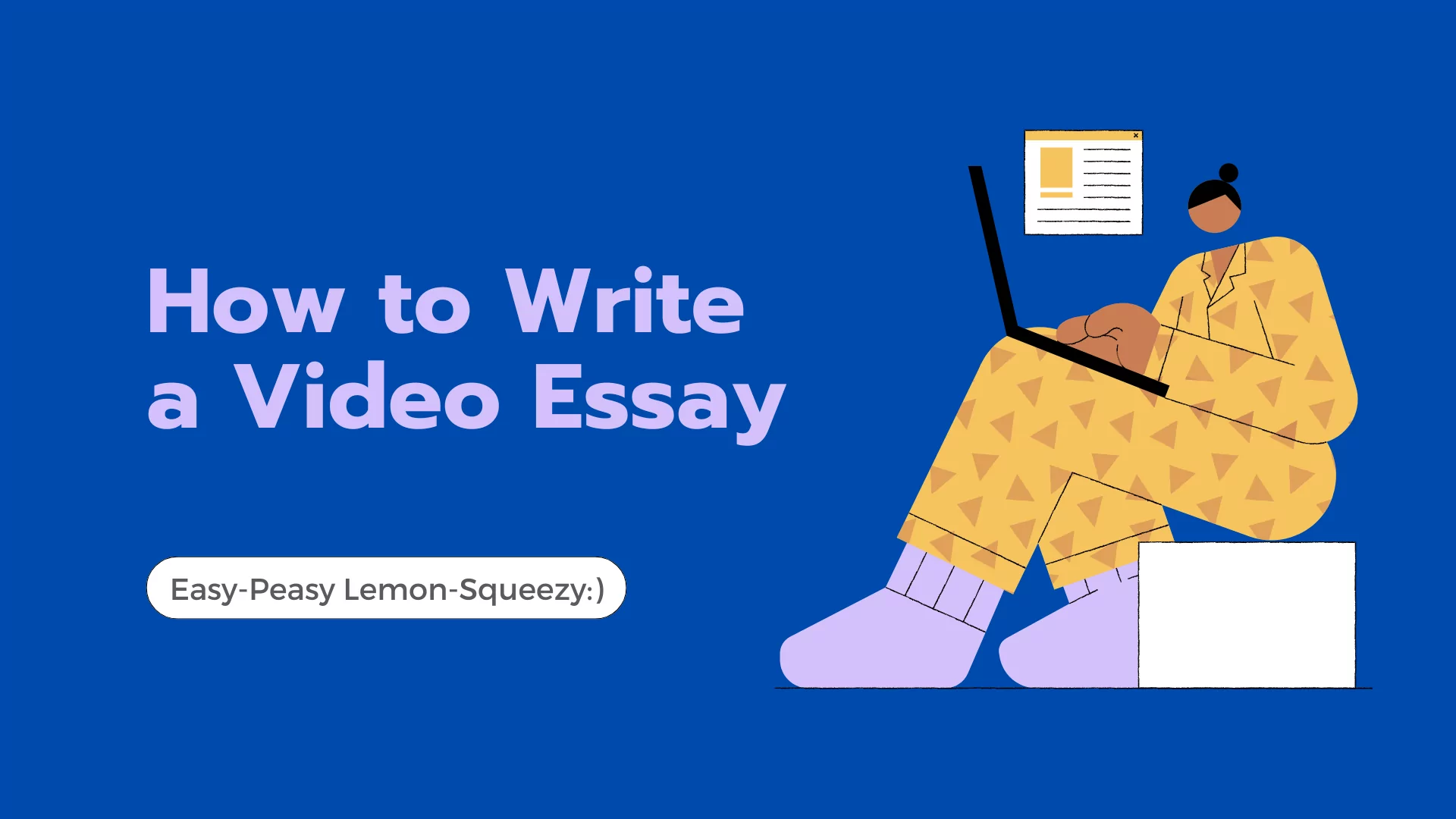
How to Write a Video Essay

- November 1, 2024
- Comments Off on How to Write a Video Essay
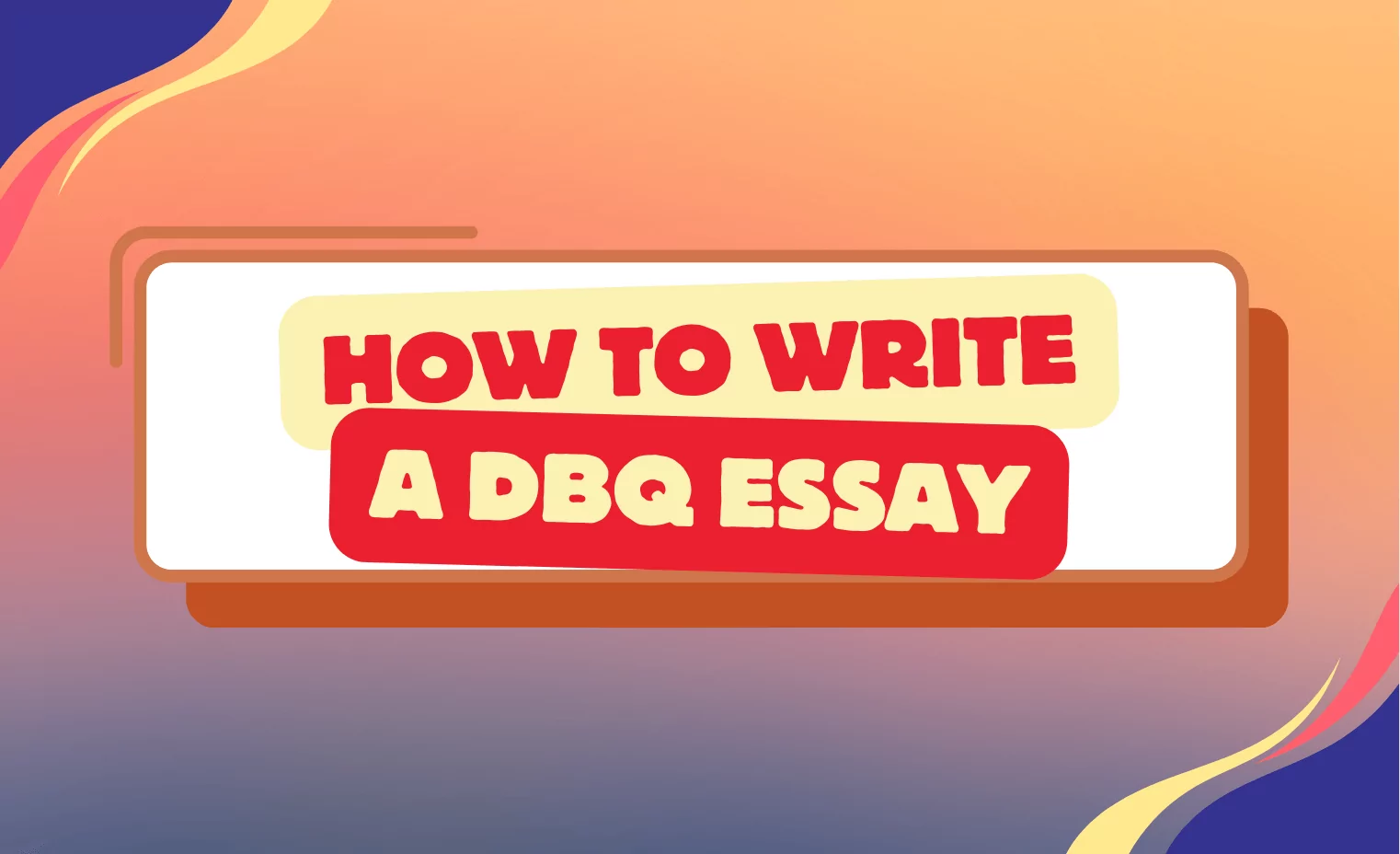
How to Write a DBQ Essay
- Comments Off on How to Write a DBQ Essay
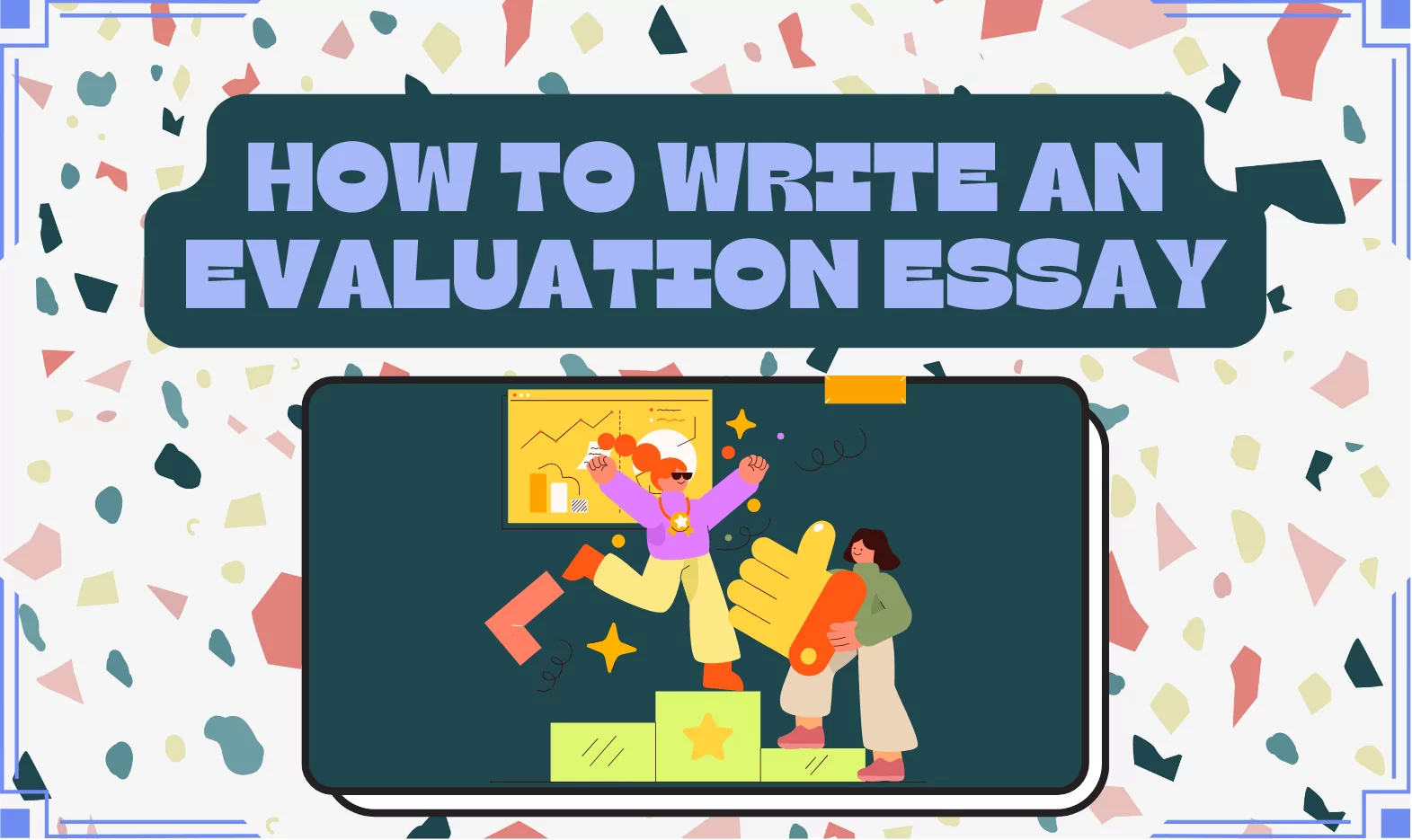
How to Write an Evaluation Essay
- October 3, 2024
- Comments Off on How to Write an Evaluation Essay
Are you ready to write top-quality essays?
Boost Your Essay Writing Skills and Achievements with Textero AI
- No credit card required to start
- Cancel anytime
- 4 different tools to explore
How to Use Dialogue in Personal Essays?

Using dialogue in personal essays are an amazing trick to draw the reader’s attention. It is the only writing method that keeps the reader and writer connected vividly.
To effectively use dialogue in an essay, it’s essential to first understand their definition and purpose, explore their types, learn the proper writing method, and finally, understand the do’s and don’ts for crafting dialogue.
Once you overcome these elements, your essay will look more vivid and charming. So, without further delay, dig into this blog and explore each piece of information discussed.
Table of Contents

What are Dialogue in personal Essays
Dialogue in an essay is a written or spoken exchange of words between two or more characters.
As a writer, I would say writing a dialogue in a essay is the most relieving part because it allows me to give characters their own voices and shows me their personality and beliefs.
When and Why to Use Dialogue in an Essay
Dialogue is used in different types of essays, such as personal, narrative, and explanatory, to show a character’s strength, different thoughts around a problematic discussion, and how to interact with others more vividly. Here are some other scenarios when using dialogue in personal essays can make writing more impactful to the reader.
To Develop a Character
Dialogue shows the character’s voice, attitude, and emotional state through their words and how they speak.
Plotting a Scene
Including actual conversations between two or more characters can help the reader visualize and understand the context of the situation.
Engaging the Reader
Dialogue also breaks the longer narrations into a short, interesting conversation that ultimately makes the essay more engaging to the reader.
To Highlight Conflict and Tension
Dialogue in personal essays is used to raise conflict and tension by showing direct interactions between two characters or highlighting disagreements. As a result, readers are drawn into the narrative, driving the conflict forward while making the story more vivid and relatable.
Types of Dialogue in a College Essay
The importance of dialogues in essay and the reasons for studying them are discussed in the above section. It’s time to explore the two major types of Dialogue in a college essay:
Inner Dialogue
A dialogue that is in your head or your imagination is called inner dialogue. This type of dialog in an essay is mostly monologue and speaks about your own thoughts. Mostly, writers may use these dialogues inside quotation marks, italicizing or by bolding. Here’s an inner dialogue example:
“Did I eat the food? No, I better go for lunch.”
Outer Dialogue
An outer dialogue is the conversation between two or more characters and is most effective in essays. This goes under double inverted commas and usually starts from a new paragraph. Here’s an outer dialogue essay example for 2 person.
“I can’t wait to go to my cousin’s wedding.” Said Michael:
“But the flight is canceled due to heavy snow.” Replied Joseph:
How to Write Dialogue in an Essay
Dialogues are a powerful way to bring the reader into the story. Here are some writing dialogue tips in personal and other nonfiction essays.
Write Dialogue Where Necessary
In personal essays and other nonfiction writing, dialogues should be used only where they add value and seem necessary.
However, in personal essays, dialogues are used for exciting situations, elaborate funny incidents, highlight the conflict and provide vivid imagery of the topic being discussed.
Suppose you are writing an essay about yourself, and there is a point where you describe a funny incident with a friend; here is your chance to add some funny dialogue in personal essays.

Friend: “Hey, remember when we got lost on the hiking trail? That was worse than this, right?”
You: “We were lost for two hours, and you thought snacks would solve it!”
Friend: “Snacks solve everything. Don’t question my logic.”
Talk Like Real People
You have to write the dialogue like a casual conversation. People avoid professional language in daily life and use slang, grammarly wrong sentences and contractions in writing dialogue. Through this, your dialogue in personal essays will look more realistic and engaging to the reader, and they will better connect themselves to the situation.
Here’s an example that shows how you write dialogue in your personal essay, like a casual conversation.
- Friend: “Bruh, I legit can’t believe you did that. Like, what were you even thinking?”
- You: “Honestly? I wasn’t. My brain just went, ‘Nope, not today.’”
- Friend: “Yeah, well, you had me out here lookin’ like a fool too! We both almost got roasted.”
- You: “Okay, chill. It’s not like we died or anything. Plus, it was kinda funny, admit it.”
- Friend: “Nah, funny for you, maybe. I’m still scarred, dude.”
Less is Enough
You are not writing a comprehensive dialogue but an essay. Hence, add less dialogue but be full of quality. Focus more on creating essay outlines, structuring, and writing than just focusing on dialogue in personal essays.
Here’s an example showing a dialogue with fewer words but of good quality .
I still remember the frustration bubbling up as I faced Alex that day. “You never listen, do you?” I blurted out, my voice sharper than intended.
Use Dialogue Tags But in a Gentle Tone
Dialogue tags show us the tone of a person’s speaking. In a personal narrative essay for high school , there is no room for harsh and wild words, so be gentle and polite while writing the dialogue tag.
However, it’s best to keep your tags to words that describe actual speech, like shouted, whispered, asked, wondered, replied, responded, etc.
Let’s see how dialogue tags can be written in a gentle tone:
- “I thought we’d meet earlier,” she said softly, glancing at her watch.
- “I know, and I’m sorry,” he replied, his voice filled with sincerity.
- She nodded, a gentle smile forming. “It’s okay. Let’s not worry about the time.”

Secure Your Custom Essay Writing Solution
Provide Each Character With a Unique Voice
If there is more than one character speaking in your essay, provide each with a unique voice. Do this by changing the vocabulary, tone, and rhythm of each character.
Here’s an example dialogue in personal essays to show you what each character’s unique voice looks like
- Mia: (excitedly) “I can’t believe we actually pulled it off! This is going to be amazing!
- Jake: (calmly) “Yeah, let’s not get ahead of ourselves. There’s still a lot to do.”
- Liam: (sarcastically) “Oh, sure, because nothing ever goes wrong when Mia’s ‘amazing’ ideas are involved.”
How to format dialogue in APA and MLA style
Quoting dialogue in college essays needs a proper format and structure to follow. However, APA and MLA are two specific ways to show how do you quote dialogue in an essay.
APA Dialogue Formatting
Short dialogue: Put the dialogue and tags in the same paragraph. However, a comma should separate the tag and double quotation marks on both sides of the dialogue.
Laura said, “I’m feeling overwhelmed with assignments today.”
Dialogue from more than two characters: If the dialogue involves more than two persons, each one owns one paragraph in the essay text. In APA style, it would be written as double quotation marks at both ends of each sentence, followed by a speech tag.
“I am out of my pocket money,” Joseph said.
“So what can I do for you?” Sara replied.
“You can buy him a burger, because he is hungry,” Emily said.
Multi-Paragraph Dialogue: All dialogue in personal essays would begin on a new line, and each paragraph would begin with double-quoted marks, but there would only be one closing quotation mark.
He elaborated,
“Students must learn to manage time effectively. Procrastination only leads to stress.
“Seeking professional help is acceptable, but it should not replace effort.”
MLA Dialogue Formatting
Short Dialogue: Place each dialogue in a new paragraph, even for brief exchanges. Use double quotation marks at both ends of the dialogue, and the tag should be separated with a comma.
“Oh no! I forgot my notebook at home.”
Multiple Dialogue: Make sure each paragraph starts with quotation marks, but save the closing double quotation marks for the ending paragraph. Moreover, use commas to separate speech tags.
During his speech, he said, “I owe my success to my mentors and peers. They taught me resilience. “Without them, this achievement would not have been possible.”
Do’s and Don’ts While Writing Dialogue in Essay
- Dialogue tags could be used at the paragraph’s middle, beginning or end to avoid repetition.
- Use single quotation marks if you are going to use a quote within another quote.
- Format the dialogue in personal essays in the APA or MLA, as per your academic standard.
- Separate dialogue from speech tag using commas.
- Use different verbs in a dialogue tag.
- Do revise your dialogue in a essay and cut out unnecessary sentences.
- Don’t use the same tag for each dialogue sentence, as it makes your story redundant.
- Don’t make dialogues grammatically correct and full of complex words because it can make characters seem stiff and unrealistic.
- Eye dialect is a technique that uses wrong spelling to represent speech, just like “kow” for “cow”. Our professional essay writers recommend avoiding such words in dialogues, as it may be hard for the reader to understand.
- Don’t use long sentences. Break it into a sentence and a fragment—the way people actually talk.

Get Your Custom Essay Written with 50% Discount Act Now!
Concluding Thoughts
Writing dialogue in personal essays and other types of writing is now quite easy with this helpful guide. But first, remember to follow each step carefully: start understanding the definition and purpose of dialogues, then explore where they can be used effectively in your essay writing.
Next, learn the process of writing dialogue with examples, followed by mastering APA and MLA dialogue structuring. Finally, don’t skip the do’s and don’ts of writing dialogue in essays. That’s all! If you stick to these outlines, your readers won’t be able to go anywhere without reading your essay.
How many dialogues are enough in a personal essay?
Do I need to begin a dialogue in a new paragraph in my essay?
How to quote dialogue from a book in an essay?
How to quote dialogue from a movie in an essay?
First quote the movie itself with the name in italicized, then add the quote in double quotation marks and after that you mention the time stamp it appears in the movie.
According to Star Trek II: the Wrath of Kahn, "The needs of the many outweigh the needs of the few" (29:45-31:18)

We are a team of professional writers providing quality-assured essays, research papers, and assignments. We bring the most affordable services for you with multiple revisions. Get plagiarism-free content with Turnitin pass and on-time delivery. We Create Great Content, Value, & Reliability!
- Biography Writing Services
- Opinion Essay Writing Service
- Personal Statement Writing Service
- Cover Letter Writing Services
- College Essay Writing Service
- Our Writers

Learning Materials
Mastering how to write a conversation in an essay.

Updated: Jul 5, 2024

Ever felt your essay lacked that spark to truly immerse the reader? Writing conversations in essays can be tricky, balancing authenticity with academic rigor. To write a conversation effectively, use dialogue to add depth, emotional resonance, or clarify the content, ensuring it captures attention and feels realistic. In this blog post, we'll explore how to skillfully integrate dialogue into your essays, from understanding its purpose to mastering formatting rules like APA and MLA.
Understanding Dialogue in Essays

Dialogue in essays is not just about replicating spoken words but about enhancing the narrative and providing depth to the characters and the situation. It serves several key purposes: it can advance the plot, reveal hidden motives, or highlight conflicts. In narrative essays, dialogue breathes life into characters, making them more relatable and vivid to the reader. Similarly, in argumentative essays, it can illustrate points more dynamically and engage the reader more effectively than a simple exposition might.
The importance of dialogue in essays cannot be overstated. It transforms the reading experience by adding layers of meaning and emotion that pure descriptive text cannot achieve. For instance, dialogue can:
- Showcase a character’s personality and speech patterns,
- Build tension or suspense through interactions,
- Provide insights into the plot without a direct narration. Thus, mastering the use of dialogue is essential for any student or writer aiming to craft compelling and persuasive essays.
Exploring Types of Dialogue for Essays
In essays, dialogue can be categorized into three main types: direct , indirect , and inner dialogue. Direct dialogue involves the exact words spoken by characters, enclosed in quotation marks, providing a vivid sense of conversation. It's particularly effective in narrative essays where capturing the immediacy of an interaction is crucial. Indirect dialogue , on the other hand, paraphrases the spoken words without quotation marks, often used to summarize conversations or to blend dialogue into a descriptive passage, making it less disruptive and maintaining a more formal tone suitable for academic or analytical writing.
Inner dialogue reflects the thoughts or internal conversations of a character, offering a glimpse into their motivations and emotional states. This type of dialogue is usually not marked by quotation marks but may be italicized to differentiate it from external dialogue. Each type of dialogue serves a unique purpose in an essay:
- Direct dialogue adds realism and immediacy,
- Indirect dialogue smooths narrative flow while conveying essential information,
- Inner dialogue deepens character development and emotional engagement. Understanding when and how to use each type can greatly enhance the effectiveness of your writing, making your essays more dynamic and engaging.
Structuring Dialogue in Essays
Structuring dialogue effectively in an essay is crucial for maintaining clarity and ensuring a smooth flow of the narrative. When integrating dialogue, it's important to consider its placement within the context of your essay. Begin a new paragraph each time a different character speaks, which helps the reader easily follow the conversation. Additionally, ensure that each piece of dialogue serves a purpose, whether it's pushing the narrative forward, revealing character traits, or providing necessary information. Avoid cluttering your essay with unnecessary dialogue that does not enhance your argument or story.
To maintain a clear structure, use dialogue tags judiciously. These are phrases like 'he said' or 'she asked' that attribute the spoken words to a character. While necessary for clarity, repetitive dialogue tags can become cumbersome. Instead, mix them with action or descriptions that convey the speaker's mood or reactions, providing a richer picture without repetitive tags. For instance:
- John sighed. "I don't know what to do," he admitted.
- "Really?" Mary raised an eyebrow. "I thought you had it figured out."
This approach not only identifies who is speaking but also adds depth to the dialogue.
Start Writing Your Free Essay!
Formatting dialogue in academic essays.
When incorporating dialogue into academic essays, it's crucial to adhere to specific formatting guidelines to maintain the essay's credibility and readability. Different academic styles, such as APA or MLA, have particular rules for dialogue formatting that must be followed. For instance, in APA style, dialogue included as part of your narrative should be enclosed in double quotation marks, and each new speaker's dialogue should start a new paragraph.
Using the correct formatting not only helps in distinguishing the speakers but also aids in the overall presentation of your essay, making it easier for readers to follow the conversation. Here are some essential pointers:
- Always use double quotation marks for direct speech.
- Start a new paragraph for each new speaker to enhance clarity.
- Ensure that punctuation marks like commas, periods, or question marks are placed inside the closing quotation marks.
Adhering to these formatting rules is not just about following guidelines but about enhancing the reader's understanding and engagement with the content. Properly formatted dialogue can transform a simple narrative into an intriguing and dynamic discussion, thereby elevating the quality of the academic essay. Remember, consistency in your formatting choices throughout the essay is key to a polished and professional presentation.
Rules for Formatting Dialogue Correctly
To format dialogue correctly in academic essays, focus on punctuation, capitalization, and paragraphing. Begin each character's dialogue with a new line and enclose their speech in double quotation marks . Ensure that all punctuation marks that are part of the dialogue are placed inside the closing quotation marks. For example, if a sentence within dialogue ends with a period, the period should be inside the quotation marks. Additionally, the first word in each line of dialogue should be capitalized, unless it's part of a continuing sentence.
Examples of Dialogue in Essays
Let's explore some practical examples to understand how dialogue can be effectively used in essays. For instance, in a narrative essay about a family dispute, you might write: John exclaimed, "I can't believe you would say that!" This direct dialogue, enclosed in double quotation marks, vividly captures John's shock and helps the reader feel the tension. In another example, an academic essay discussing communication styles might include: Dr. Smith argues, "Non-verbal cues are often misunderstood," illustrating the expert's opinion through direct dialogue.
In a reflective essay, using inner dialogue can add depth, such as I thought to myself, 'Is this really the right choice?' This internal questioning highlights the narrator's conflict without direct speech. For indirect dialogue, consider a history essay example: The general told his troops that they would advance at dawn, which paraphrases the speech to integrate smoothly into a factual narrative. Each example demonstrates how dialogue can enhance the textual engagement and clarity, making the characters and scenarios more relatable and impactful.
Crafting a Conversational Essay
Crafting a conversational essay is all about making your writing feel like a chat between friends, rather than a formal lecture. This style not only engages readers but also helps them connect with the material on a personal level. To achieve this, you can start by using everyday language and short, punchy sentences that mimic natural speech.
Techniques to enhance the conversational feel include:
- Asking rhetorical questions to provoke thought,
- Using contractions like "you're" instead of "you are", which sound more natural,
- Incorporating personal anecdotes or light humor to establish a friendly tone. These strategies make the essay not just informative but also enjoyable to read, keeping your audience hooked from start to finish.
Enhance Your Essays with Samwell.ai
Samwell.ai revolutionizes the way you write essays with dialogue, making them more engaging and authentic. The AI-powered writing assistant helps you craft realistic conversations that enhance the narrative and emotional depth of your essays. This tool ensures that each dialogue piece is not only well-integrated but also adheres to academic standards, maintaining the balance between creativity and academic integrity.
Additionally, Samwell.ai offers advanced plagiarism checks and access to authentic sources , which are crucial for backing up your dialogues with credible information. With features like in-text citations and multimedia integrations, your essays become more comprehensive and informative, providing a richer context to the conversations within your academic writings.
Frequently Asked Questions
What is a conversation with an example essay.
A conversation in an essay is a way to include spoken words between characters to enhance the narrative, provide depth, or illustrate points dynamically. For example, in a narrative essay about a family dispute, you might include: John exclaimed, "I can't believe you would say that!" This direct dialogue, enclosed in double quotation marks, vividly captures John's shock and helps the reader feel the tension.
How to show a conversation in writing?
To show a conversation in writing, use direct dialogue by enclosing the spoken words in double quotation marks and starting a new paragraph for each speaker. Additionally, use dialogue tags like 'he said' or 'she asked' to attribute the spoken words to a character. For instance: John sighed. "I don't know what to do," he admitted. "Really?" Mary raised an eyebrow. "I thought you had it figured out."
How is a conversation written?
A conversation is written by using direct dialogue where the exact words spoken by characters are enclosed in quotation marks, and each new speaker's dialogue starts a new paragraph. Use dialogue tags to attribute the spoken words to a character, and ensure punctuation like commas and periods are placed inside the closing quotation marks. For example, you might write: John exclaimed, "I can't believe you would say that!"
How do you write a good conversation?
Writing a good conversation involves using realistic dialogue that reflects the character's personality and advances the plot or theme of the essay. Start each character's speech in a new paragraph, use double quotation marks for direct dialogue, and mix dialogue tags with action or descriptions. Ensure each piece of dialogue serves a purpose, whether revealing character traits, building tension, or providing necessary information. For example: John sighed. "I don't know what to do," he admitted. "Really?" Mary raised an eyebrow. "I thought you had it figured out."
Most Read Articles

Your Guide to Help Writing a Essay Successfully
Expert tips for help writing a essay - from crafting a thesis to structuring your essay effectively..
How to Write Critical Thinking Essay: Expert Tips
Expert tips for writing a critical thinking essay. learn how to structure, choose topics, and use evidence effectively.'.

How to Write a Good Hook: A Step-by-Step Guide
Master the art of crafting a good hook with our guide. create compelling openers for a memorable first impression..

Ultimate Guide to Writing Tips: Enhance Your Skills Today
Discover a variety of writing tips in our ultimate guide to elevate your skills today.

IMAGES
COMMENTS
Another important issue that should be considered by students learning how to put dialogue in an essay relates to correct punctuation. We will use correct and incorrect examples for clearer referencing. - If your used speech quotation locates at sentence end, always implement full stop. It should be inside inverted commas, as in here:
Dialogue is what the characters in your short story, poem, novel, play, screenplay, personal essay —any kind of creative writing where characters speak—say out loud. ... When you're editing your characters' dialogue, cut back all the parts that add nothing to the story. Real-life conversations are full of small talk and filler. Next ...
Dialogue formatting matters. Whether you're working on an essay, novel, or any other form of creative writing. Perfectly formatted dialogue makes your work more readable and engaging for the audience. In this article, you'll learn the dialogue formatting rules. Also, we'll share examples of dialogue in essays for you to see the details.
Avoid including long quotes in your essay because they can confuse your reader and make him fall off from your essay. How to Quote Dialogue Example. There are different rubrics and formats for follow when quoting various phrases in your college essay. It all depends with the type and length of dialogue that you are referring.
In order for you to know how to write dialogue in an essay, you should know what exactly dialogue is first. It's really pretty simple. Dialogue is just a conversation between two or more people. It can be used in movies, plays, fiction or, in this case, essays. Dialogue should not be confused with quotations from outside sources.
How to add dialogue in an essay: you can either use double quotation marks to indicate what someone said, or start in a new line using a Dash followed by the actually spoken phrase every time a new character speaks. This demonstrates that dialogue conversations have started. "Elisa gave me this purse for my birthday."
The type of dialogue to include mostly depends on the purpose with which you decided to write such a conversation into your essay in the first place. How to Format Dialogue in an Essay: General Rules. Writing a dialogue is not so tricky when you get accustomed to it. It is also much easier when you follow all the main rules.
Quoting dialogue in college essays needs a proper format and structure to follow. However, APA and MLA are two specific ways to show how do you quote dialogue in an essay. APA Dialogue Formatting. Short dialogue: Put the dialogue and tags in the same paragraph. However, a comma should separate the tag and double quotation marks on both sides of ...
The closing quotation marks are placed only at the end of the final paragraph of dialogue. Any other paragraphs within the quote do not have closing quotation marks. Movie Dialogue. If dialogue from a movie is being included, each quote begins with the speaker's name and a colon. The line in quotation marks follows.
In a reflective essay, using inner dialogue can add depth, such as I thought to myself, 'Is this really the right choice?' This internal questioning highlights the narrator's conflict without direct speech. For indirect dialogue, consider a history essay example: The general told his troops that they would advance at dawn, which paraphrases the ...